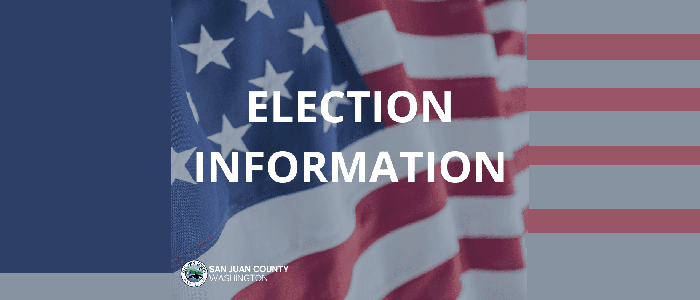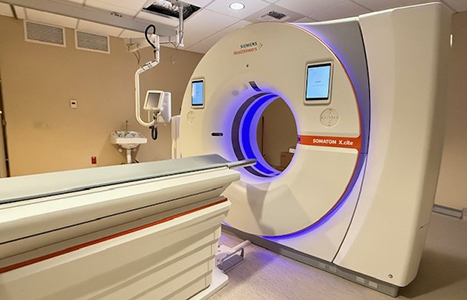–by Matthew Gilbert, Orcas Issues reporter —
The Preamble of the Vision Statement to the San Juan County Comprehensive Plan reads as follows:
“WE THE PEOPLE, citizens of San Juan County, value our healthy natural environment, vibrant and diverse community, self-sufficiency, interdependence, privacy, personal freedom, independence, and stewardship of our common resources. These rural islands are an extraordinary treasure: as a community bound together by these shared values, we declare our commitment to work towards this vision of the San Juan Islands.”
It’s the lead-in to earnest, aspirational summaries of what this vision would/could look like in more than a dozen domains, from agriculture and the arts to the economy, housing, and land use. Encompassing it all seems to be a deep appreciation for and commitment to sustaining the sometimes breathless beauty of the islands themselves.
The big question for the county – for us – is identifying priorities while translating these visions into specific policies. If you ask ten people in the County how they define “quality of life,” you will likely get 10 different answers, but in most cases those differences boil down to a more essential “predicament”: managing growth or controlling growth, which frequently pits market forces against what a plan says it wants to achieve. Can—should—the Comp Plan attempt to regulate those forces? This dilemma was made vividly clear in the San Juan Islands Visitor Study 2018 released last June: Nearly 90% of all those interviewed opposed increases in crowding, but nearly 80% also opposed instituting limits on how many people could come to the islands. (Note: Locals will be interviewed as part of Phase 2 research.)
Taken one step further, the lodging industry has been hit by the massive proliferation of Airbnb and VRBO rental units, which puts additional pressure on the county to keep folks coming, which further exacerbates crowding, putting more pressure on services and quality of life, and so on. Is the solution to limit or even reduce the number of such units?
Annual ridership on the Washington State ferry system increased by more than 225,000 last year to nearly 25 million, its highest level since 2002. “Our ridership is up 10 percent from five years ago and it’s forecast to grow another 30 percent to all-time highs over the next 20 years,” said WSF Assistant Secretary Amy Scarton. The Anacortes—San Juan Islands run hit a record following year-to-year increases of 1.4 percent in people and 1.5 percent in vehicles, a trend that, barring an economic meltdown or environmental apocalypse, shows no sign of changing. Moran State Park clocked nearly a million visitors in 2018 while under pressure from a declining budget. It should also be pointed out that county population growth has tended to follow visitor growth—and vice versa. No coincidence there.
The SJC Comp Plan, first adopted in December 1998, is an outgrowth of the state’s Growth Management Act (GMA), passed by the Legislature in 1990 to do just that: assuming there will be growth, it provides loosely enforceable goals and guidelines to direct growth in ways that don’t harm the environment, compromise economic development, or negatively impact “quality of life.” Local jurisdictions are given broad discretion for interpreting those guidelines to meet local conditions, but they must meet compliance deadlines and conform with the spirit of the GMA. Nearly 20 years later, there is much debate on how well that Plan has worked for San Juan County (see “The County’s Future: A New Level of ‘What’s Next?’”). It was last revised in 2010.
The Plan is a lengthy, wide-ranging, and sometimes technical document that is presented on the county website in topic sections of various lengths and complexity. A variety of draft assessments and reports have been underway and will soon be completed, including population projections and seasonal estimates, a housing needs assessment, and an economic development assessment, among others. As Planning Manager Linda Kuller explained, “Our process has been to release preliminary drafts of portions of the plan update for early public input as they are completed…There will be plenty of opportunities to comment prior to public hearings on the entire updated document.” Current drafts can be viewed here. What’s been missing in the conversation is anything having to do with the county’s residential “build-out” capacity if every parcel were developed to its legal maximum—not to mention the impacts of that growth (e.g., taxes, services, environment, infrastructure). “Unofficial” number-crunching has put that figure at . . . 80,000.
A series of five public feedback workshops—one on each island— with approximately 90 participants was completed last Fall. (A report on the Orcas workshop can be read here.) The results, along with those of a self-select online survey covering similar ground (171 respondents), have been summarized in a report and distilled into a Power Point presentation for the County Council’s February 9 meeting. The data is organized around clusters of questions having to do with five key components of the Plan:
- Land Use
- Transportation
- Housing
- Water Resources
- Economic Development
The results are helpful, and vary by island, but however well-intended, the process is not a reliable barometer of public sentiment, which the report itself acknowledges. If there is little additional public input, especially by those who have not been heard from, then that small sample ends up having an outsized impact—to the extent is has an impact at all. Forgive the cynicism, but as we have seen time and time again in this county, the preferences of the public have often been hijacked by “elected representatives who think they know better than the people who elected them” (courtesy of Michael Riordan as he commented in a recent post). The importance of the current Comp Plan update process is giving residents a chance to be proactive in taking responsibility for shaping their collective future and holding decision-makers responsible if those voices are ignored. If all else fails, there’s always the next ballot box—again—but by then it may be too late for some issues.
As noted, the public comment process will continue, and Orcas Issues will be tracking Comp Plan developments starting this Friday with the Planning Commission’s first meeting of the year, which will be live-streamed at https://www.sanjuanco.com/971/Planning-Commission-Meeting-Video. For notifications about Comp Plan updates you can sign up here; to view the updates themselves as well as various staff reports, go here. Send comments to compplancomments@sanjuanco.com.
**If you are reading theOrcasonian for free, thank your fellow islanders. If you would like to support theOrcasonian CLICK HERE to set your modestly-priced, voluntary subscription. Otherwise, no worries; we’re happy to share with you.**








Matthew, once again we have a chance to focus on the growth that people here love to post about. Attacking tourist, AirBnB and VRBO is a quarterly fun-fest. But you miss the biggest parts of the Vision Statement: vibrant and diverse community, self-sufficiency, interdependence, privacy, personal freedom, independence, and stewardship of our common resources. So how will Orcas promote diversity? Right now it’s a bastion of wealthy, white, well educated who are significantly older than the general state population. I don’t know how to make Orcas more attractive to younger, minorities, disenfranchised, poor, etc. It seems that would require low cost housing and subsidies that are unrealistic.
However, self-sufficiency, interdependence, privacy, and independence are easily achieved by getting rid of the ferry and the undersea electric cable. That would put dramatic pressure on residents to work together, will increase privacy, force the use of wind/solar, and as a side effect will reduce tourism and growth in a matter of weeks. The goal of managing/slowing growth isn’t aggressive enough when you can aim for and achieve “negative growth” and dismantle what is already harmful to nature.
As the island’s population dwindles, the promise of stewardship will be met, by the near elimination of the people who as everyone seems to agree is the root of the ecological problems. My guess is that solution is as unrealistic as is making Orcas a welcoming place for poor people.
Thank you Matthew; an excellent summary of the challenges we face. Comprehensive planning in SJC has a very short history.
You mention 1998 as the date of first adoption of our Comp Plan; while that was our first effort to comply with GMA, our Comp Plan was first adopted in 1979.
Prior to ’79, if one obtained a sewage disposal permit from the County Sanitarian, one could construct a building for any use, of any size, anywhere.
Much of that initial planning effort, I’m told, occurred in smoke-filled rooms which were left with a lot of blood on the floor.
We can do better…and we are…but reconciling the Vision Statement with an acceptable regulatory framework will require some serious soul-searching and truth-telling.
Troubles with accountability aboundeth.
.Capitalism (market forces) is a totalitarian system. All of our virtuous intent is leveraged by this fact. All of those noble sentiments in the vison statement are now hard up against the realities of cash on the barrelhead.
For centuries people migrated to the San Juans (yes, even pre-Columbian, Chris Graham) hoping to find some breathing room.,
Totalitarian systems make it hard for anyone to breath.
Just brain storming here: we could limit the square footage of houses so that trophy homes could not be built. This might discourage the ultra-rich from building here. There could be even greater limits to the building footprint for smaller lots that were grandfathered in at the time of the original Comp Plan. These smaller lots with more modest homes would be more affordable. This idea would not run afoul of the Takings Clause because reasonable use of the property would not be denied. Smaller homes would have reduced environmental impacts.
In today’s New York Times (The $238 Million Penthouse Provokes a Fierce Response: Tax It), I read about a “pied-a-terre tax” on the second homes, condos, and apartments of the wealthy. Apparently London, Paris, Sydney and Hong Kong are already doing something like this.
Hmmm . . .
Now THAT could help control excessive growth and at the same time provide an extra income stream for our perenially cash-strapped county government, perhaps to support affordable housing for much-less-wealthy workers.
But could we get our elected representatives to go along with it?
And thank you, Matthew, for recirculating my recent comment about them, along with a link to it.
That was the February 9 online edition, not today’s NYT. Mea culpa.
Neil, I emphasized the growth issue because it is central to so many others, but you are right to point out that there are other important issues in the Comp Plan that need input and insight. Thanks for the reminder.
Thanks for the article, Matthew–this is an important conversation to keep going. Could you please clarify the 80,000 residential build-out number for me? Does that apply to houses, or full-time residents, or full-time plus part-time residents plus tourists? I’m also curious about who generated the number, unofficial though it is.
Growth is the central issue to the Comp Plan, since there has never been a balanced approach to fairly representing all of the elements. Ecological balance supports the balance of accommodating all the rest of the elements. Tourism economy and heavy reliance on development in UGAs have driven things – it’s always been “top dog.” Let’s be truthful.
Ecology, especially in the sacrificial lambs of the urban growth areas, has always come LAST. This is especially egregious in Eastsound UGA, since we are only a mile wide, at sea level, with the Salish Sea on both sides and major fish forage habitat, which must be protected. (repeat repeat repeat!)
Without understanding of how we got here, we won’t solve the problem. We need to attract and elect people who will stand up for limitations to growth and allow the community guide them in HOW we grow. A limited land mass like a small island needs limitations on growth; limitations that thus far, the county is afraid to implement because deep pockets keep threatening lawsuits. This has to be a bottomm-up process. We can’t rely on politicians to solve this – We have to show up, stay involved, and help them be honest and representative of the entire community.
This is a much needed article, and well said. Thank you, Matthew Gilbert. Having watched for a long time and having tried to do something about it for decades, I share your thoughts and concerns.
Katie, the source of that number is Joe Symons, who for years has been pressing the county to generate those numbers and finally decided to take that task on himself. For a detailed journey on how he got there, go to https://theorcasonian.com/guest-opinion-county-development-potential-needs-discussion/.
“…value our healthy natural environment, vibrant and diverse community, self-sufficiency, interdependence, privacy, personal freedom, independence, and stewardship…”
Lofty values statements can hide moribund governance which obviates those very values in practice. After all, the accretion of daily violations makes our politics a vehicle for those that value their own agenda over respect for our most basic shared goals as a community.
Case-in-point: No one “needs” to make a few hundred grand from their wasteful VRBO or build their ugly commercial, or personal, enterprise squat in the middle of a priceless natural vista that all should freely share. And their [small “r”] “right” to do so is created by .. US!
Conversely, OUR obligation to act the role of steward for our natural resources -or shared needs- is fatally compromised by official acts that deliberately mock shared values. Yes, we know.
When the power to govern is used to protect that power from challenge then we see general disenfranchisement by widespread failure of the electorate to participate in the farce.
Silence is not assent.. or apathy.
On Orcas, weariness and aversion lead to complicity.
Fine legalistic niceties are a fig leaf.